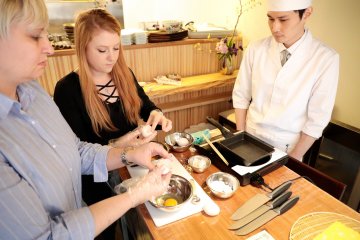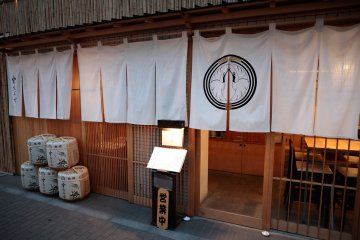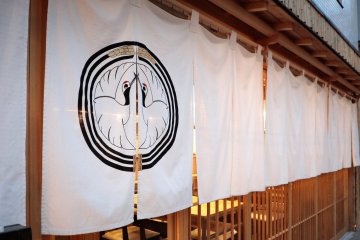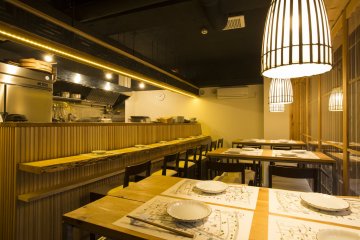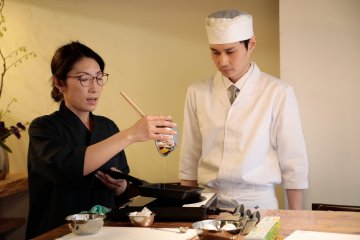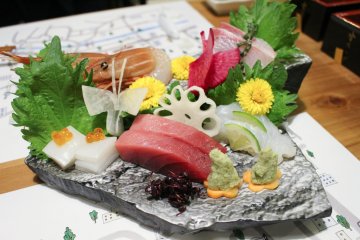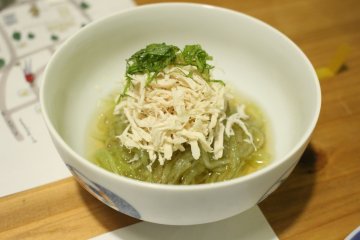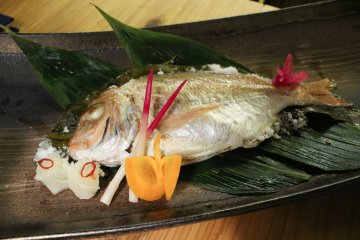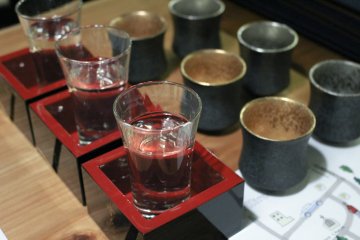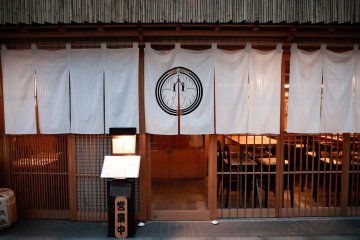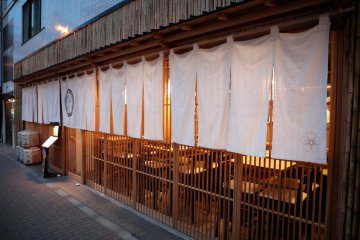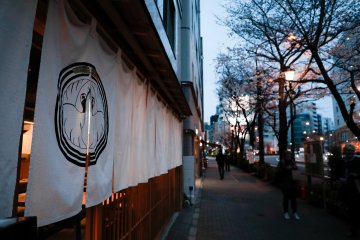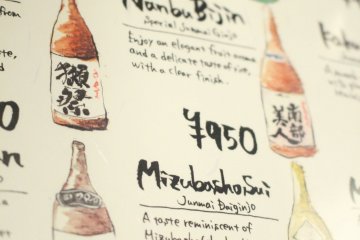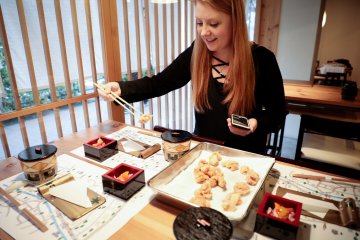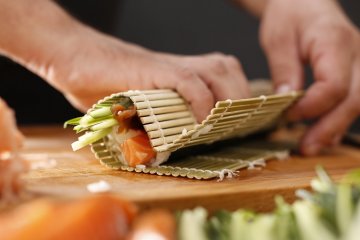A friend of mine, who has lived in Japan for many years, told me about a restaurant where I could enjoy Japanese sake – the popular Japanese drink which has seen a global resurgence in recent years.
Located along Meiji Street and opened in late 2017, 'TOKITARAZU' (時たらず) is a 5-minute walk from Hiroo station in an area known for being an affluent residential suburb of the Shibuya district, popular with foreign residents and home to many emerging trends.

TOKITARAZU is hard to miss – its entranceway decorated in a traditional, white noren curtain and sake barrels, hiding a wooden lattice-style exterior illuminated by the warm glow from inside the establishment. It's hard to resist taking a look inside, where staff members in traditional Japanese-style uniforms will welcome you.

The interior is both cozy and compact, yet sprawls across four distinct areas: counter-seating perfect for watching the chefs work their magic, tall bar-style seating perfect for drinks or a more casual atmosphere, Western-style table seating to the inside-left and also a private room for group bookings. I grabbed a seat at the tall table on right side, which gives a nice vantage point of the chefs at work and traditional interior.
Impressively, staff members will greet you in English and will be happy to welcome you inside to try their wide range of washoku foods (now a recognised UNESCO Intangible Cultural Heritage since 2013) served in a Kaiseki-style and sake selections – all available at reasonable prices.
'Kaiseki' refers to the traditional Japanese style of serving lots of small dishes in succession and, as well as providing an inviting menu, TOKITARAZU also offers cooking classes on the premises too – thanks to owner Sugawara-san's mastery of the kaiseki-style and knack for teaching. Originally following in the footsteps of her mother, who worked for a Japanese airline then started training their staff in the 'way of Washoku', Sugawara-san's experience at the same airline company and ability to master the same skills helped realise her amibition to share these insights with tourists to Japan.
Lunchtime classes are available on Mondays, Tuesdays and Wednesdays, with a proper lunch service on the remaining days of the week.

An audience with Sugawara-san
What dish do you recommend?
"We recommend seasonal dishes, which pair well with Japanese Sake and Shochu. We also serve fresh seafood direct from local fishermen in Sagami Bay as well as Tokyo's Tsukiji Market every day. Our chicken dishes are also excellent thanks to the local brand chicken that we use and freshly prepare every morning.
"Every dish is prepared delicately with a lot of time and effort. In particular, we take pride in our Dashi soup stock, made from Hidaka-Kombu, a luxury variety of kelp."


What kind of sake do you serve?
"We serve a wide variety of sake, including several award-winning varieties (IWC champion winners etc.) and rare, specialist varieties. When it comes to taste, you can enjoy the full spectrum – from sake with a delicate yet sharp aftertaste, to softer but richer varieties with powerful flavours. No matter your preference, we can always recommend the perfect pairing with every meal."

Why did you name your restaurant, TOKITARAZU?
"TOKITARAZU" is a generic Japanese term to express sentiment for the past, that is, the Japanese aesthetic sensibility to feel the passage of time. With this in mind, our concept consists of the following three elements:
- Savor the exquisite tastes of TOKITARAZU
- Spend time with your loved ones and close friends at TOKITARAZU
- Experience heartwarming hospitality at TOKITARAZU
What particular Japanese cuisine best represents TOKITARAZU?
"Japan's islands extend to the north and south, surrounded on all sides by the sea. This geographic influence provides a rich, diverse traditional food culture alongside seasonal seafood and bountiful produce in the mountainous regions. Given Washoku's newly held UNESCO status since 2013, we strive to showcase its healthy and nutritious properties."
Do you use any special kinds of ingredients?
"As well as sourcing fresh local ingredients from the famous Tsukiji Market each day, we have fresh seafood delivered directly via our own fisherman suppliers at Sagami Bay, off the coast of Kanagawa.
"As for our Japanese sake menu, we diligently visit local breweries across Japan to try their unique varieties, before carefully selecting the very best brands to be featured in our restaurant.
"In this way, the pursuit of our own Japanese aesthetic sensibility in the food world is driven by this process of carefully and meticulously identifying and sourcing local and seasonal ingredients. Our process embodies the depth of Japanese cuisine not just through traditional techniques but also ingredient selection to match the season, decorating the plate, choice of ceramics and tableware – all down to the final detail that defines the whole experience.
"A key to making delicious Japanese dishes is to try to bring out the natural flavors of ingredients, and make dashi stock in a courteous manner. The value we place on the basics is one of the core concepts behind TOKITARAZU. That is our interpretation of "Iki", which is the Japanese concepts of aesthetics – the traditional idea of sophistication and stylishness. It is at the core of our food, hospitality and operation."

What is your future plan?
"Our goal is to serve dishes with "stories". We feel it is important to provide fresh seafood caught by our own trusted fishermen, using gill nets or octopus pots, than to merely purchase at wholesale supplier markets.
"We also want more people to experience Japanese food culture and Sake, so as to spread the concept of "Iki" all over the world.
"And lastly, please visit us again this spring. You will be able to taste Japanese sake while being able to appreciate the beautiful cherry blossom outside. We are planning to open our doors facing the Meiji Street as it gets warmer, which makes us one of the few restaurants with a cherry blossom view on its doorstep."

The TOKITARAZU concept instantly clicks the moment you step inside this world of traditional Washoku dishes and tailored sake pairings, and it is easy to appreciate what goes into the experience here. From the refined decor to the unique, healthy flavours on offer, you can also expect to be well-looked after thanks to the English-speaking staff and their warm hospitality.
Often when it comes to sake it feels hard to know where to begin, but the staff here can happily recommend what to try based on your preferences and dish selections. Or just browse the English menu in comfort – just like the tableware and other small details, it's another work of art that well fits the TOKITARAZU name.




